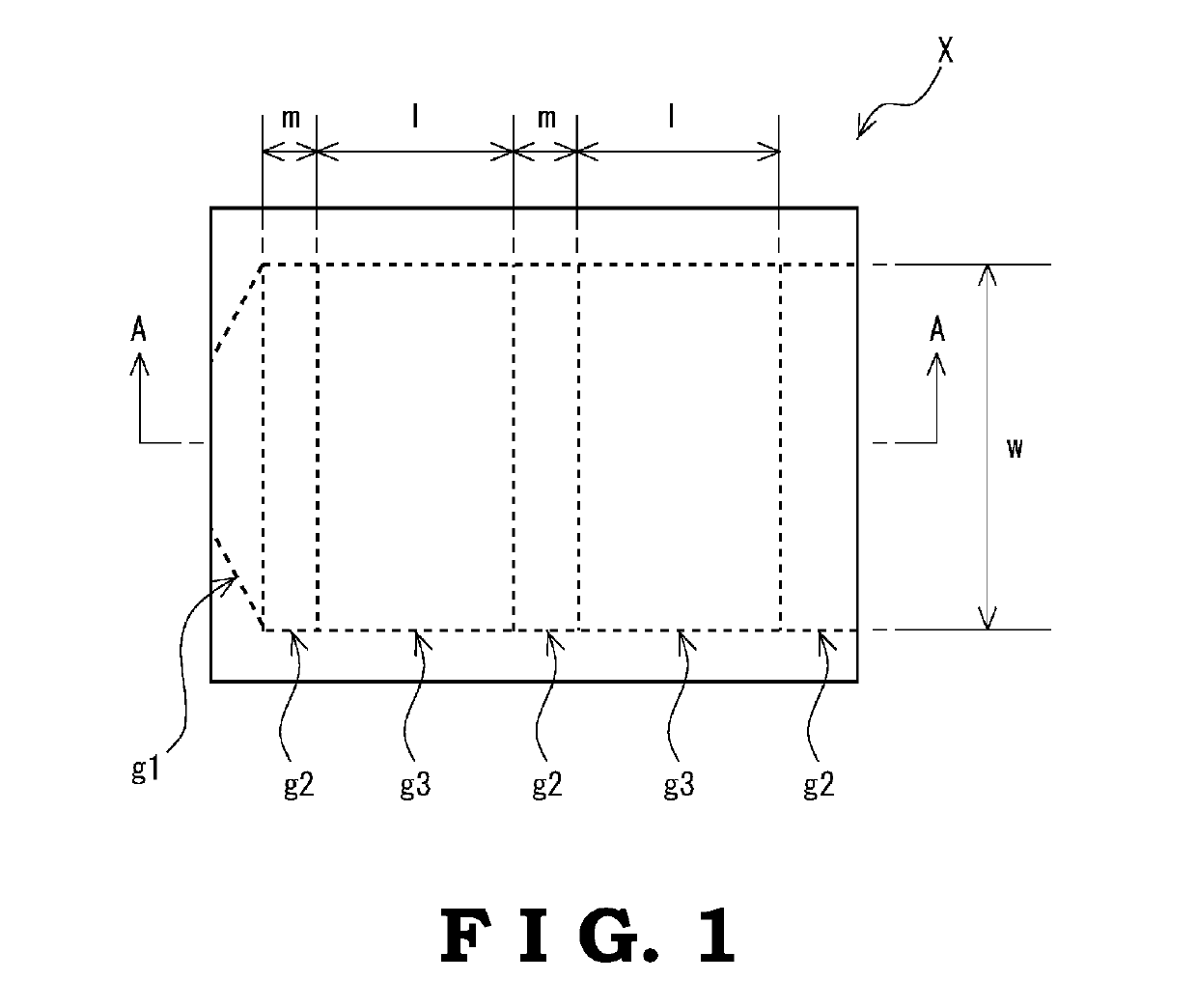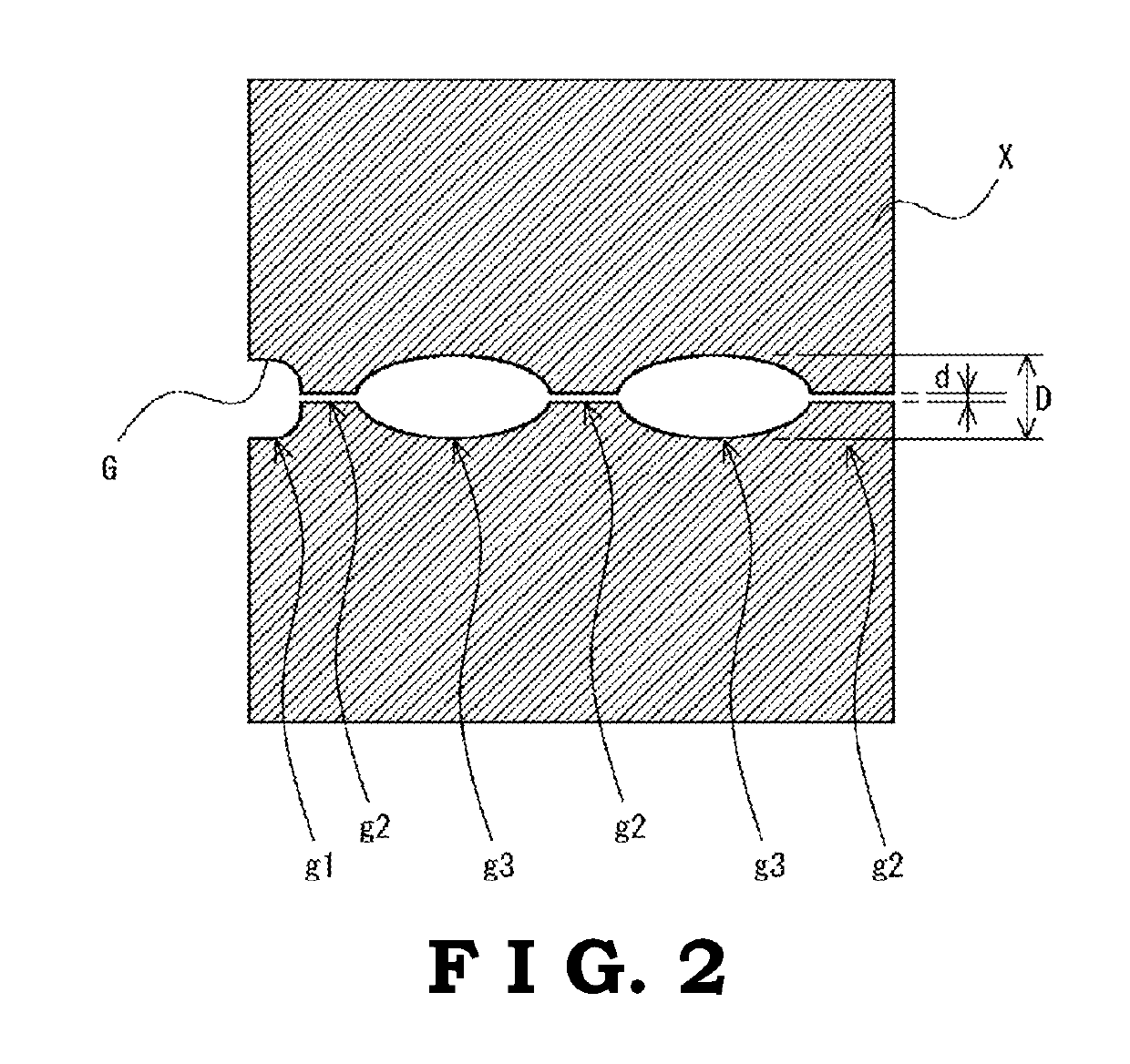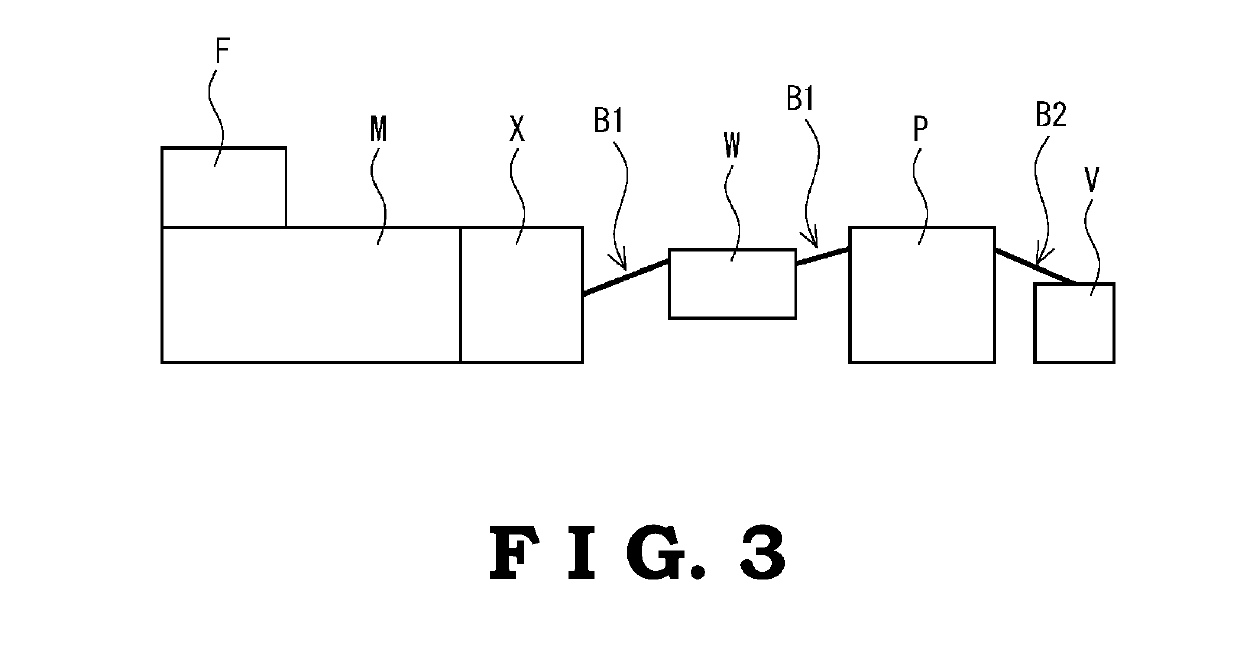Resin composition, molded product and production method thereof
a technology which is applied in the field of resin composition and molded product, can solve the problems of limited thermoplastic resin type, limited molding method, limited additive types, etc., and achieves the effect of maintaining heat resistance of molded product, superior fluidity in molten state, and providing easy and reliably
- Summary
- Abstract
- Description
- Claims
- Application Information
AI Technical Summary
Benefits of technology
Problems solved by technology
Method used
Image
Examples
production example 1
[0090]Into a 1-L flask, 104 g of a novolak-type phenolic resin (“SP1010” available from ASAHI YUKIZAI CORPORATION; hydroxyl group equivalent: 104 g / eq) as the first organic compound, and 150 g of phenyl glycidyl ether (available from Tokyo Chemical Industry Co., Ltd.; epoxy equivalent: 150 g / eq) as the second organic compound were charged, and heated at 80° C. to melt the novolak resin. After adding 1.5 g of triphenylphosphine (available from Tokyo Chemical Industry Co., Ltd.) thereto, the mixture thus obtained was heated to 110° C. and then permitted to react for 3 hrs. A polymer obtained as a reaction product was heated to 170° C. and then volatile components were removed in vacuo for 30 min. Thereafter, after recovering pressure and cooling to 150° C., the polymer was discharged. For the polymer thus produced, the standard polystyrene equivalent Mw was obtained by gel permeation chromatography (“SC-8020” available from Tosoh Corporation, columns: “G2000H”×1 and “G4000H”×1, detect...
production example 2
[0091]A polymer was synthesized in a similar manner to Production Example 1, except that 130 g of phenyl glycidyl ether and 20 g of bisphenol F diglycidyl ether (available from Tokyo Chemical Industry Co., Ltd.; epoxy equivalent: 340 g / eq) were collectively used in place of 150 g of phenyl glycidyl ether as the second organic compound. The Mw of the polymer thus synthesized was determined to be 6,200 by gel permeation chromatography. Polymer B was thus obtained.
production example 3
[0092]A polymer was synthesized in a similar manner to Production Example 1, except that 104 g of a novolak-type phenolic resin (“CP506F” available from ASAHI YUKIZAI CORPORATION; hydroxyl group equivalent: 104 g / eq) was used as the first organic compound. The Mw of the polymer thus synthesized was determined to be 1,400 by gel permeation chromatography. Polymer C was thus obtained.
PUM
| Property | Measurement | Unit |
|---|---|---|
| melting point | aaaaa | aaaaa |
| thickness | aaaaa | aaaaa |
| boiling point | aaaaa | aaaaa |
Abstract
Description
Claims
Application Information
 Login to View More
Login to View More - R&D
- Intellectual Property
- Life Sciences
- Materials
- Tech Scout
- Unparalleled Data Quality
- Higher Quality Content
- 60% Fewer Hallucinations
Browse by: Latest US Patents, China's latest patents, Technical Efficacy Thesaurus, Application Domain, Technology Topic, Popular Technical Reports.
© 2025 PatSnap. All rights reserved.Legal|Privacy policy|Modern Slavery Act Transparency Statement|Sitemap|About US| Contact US: help@patsnap.com



